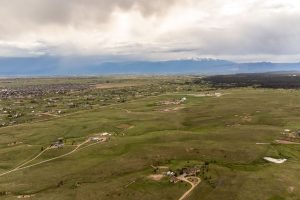Large water projects in Colorado
By Terry Stokka
In this month’s article, I would like to describe several large water projects that highlight emerging water issues and showcase how scarce water is as it is extracted from one area to provide water for growing residential developments in another area far from the water source. These projects all propose to use renewable water for small lot urban developments with lawns and shrubs.
The projects have both known and unknown consequences. The known consequences are the economic damage done to areas where the water is purchased and farmers are unable to irrigate. This is known as “buy and dry.” The unknown consequences are yet to be felt, because most of these projects are only in the early stages. The fear is that large water extraction from one aquifer will affect the adjoining aquifers and cause compounding problems.
The first large water issue has been in operation for many years. Along the Arkansas River in the La Junta area, municipalities such as Colorado Springs purchased water rights from farmers who grew melons and other vegetables. It was a tempting prospect for farmers to sell water rights and get a big check because it meant they could retire and not have to face the weather, river, bugs and costs of planting and harvesting a crop each year. The result is about 45,000 acres of idle farmland along the Arkansas River Valley that does not grow the melons and vegetables that are needed for the food supply.
The next story is located in the San Luis Valley around Alamosa. A water developer in Denver is proposing to pipe San Luis Valley water to Denver. The valley is very arid, gets only a few inches of rain per year and is heavily irrigated. Hay and potatoes are the main farm crops. A company called Renewable Water Resources proposes to spend $600 million for 22,000-acre-feet of water each year that would dry up 10,000 acres of farm fields.
The plan proposes a pipeline to transport the water to Eleven Mile Reservoir and then to the South Platte River. In addition, they propose to pay farmers to not plant crops on 15,000 acres of land. By leaving the land idle, they would save another 30,000-acre-feet of water in the valley as a bonus to the area since there is more water currently allocated than is available almost every year. This proposal would be a big blow to the agricultural economy of the valley, but the developer proposes to sweeten the pie with an additional $50 million gift to the San Luis Valley farmers. The valley residents are strongly opposed to this proposal and it has many hurdles before it would ever happen.
Back in October 2022, I wrote an article about the Falcon Area Water & Wastewater Authority (FAWWA.) FAWWA is a new entity that plans to pump water from High Forest Ranch, Bar-X Ranch and Winsome to supply Sterling Ranch, the Ranch, TimberRidge, the Schmidt property and potentially several Falcon area water districts. The project entails 27 well sites at the three locations in the Denver and Arapahoe aquifers. All three developments have homes on them with Dawson wells. Since the movement of water up and down between the four aquifers is unknown, draining the lower aquifers might affect the Dawson since there is not a clear, impermeable boundary between the aquifers. They propose to drill the first wells in 2024 or 2025.
You have already heard about Cherokee Metropolitan District that purchased hundreds of acre-feet of water in all four aquifers at Hodgen and Black Forest roads and at Black Forest Road and County Line Road. They have already drilled four wells and completed a pipeline all the way to Marksheffel and Tamlin. These first four wells have had disappointing results in three of them. They have permission to drill a total of 40 wells.
The latest water news is the purchase, by Woodmen Hills development in Falcon, of 1,849-acre-feet of water per year from the Younger Ranch near highway 83 and Walker Road. That’s enough water for 5,500 homes. By comparison, Black Forest has 6,600 homes right now. The water comes from all four aquifers. Once again this would mean a pipeline over 15 miles to get that water all the way to Falcon.
The Black Forest Water & Wells Committee (https://www.bfwater.org) sees these projects as a new trend of extracting huge amounts of non-renewable water from the Denver Basin by commercial enterprises to quench the thirst of new residential developments.
This is alarming to us, and we are urging our county commissioners to require new urban developments to have renewable water.
Next month, I plan to give you several common sense principles that our county commissioners should follow in order to preserve our Denver Basin water and use it wisely.




